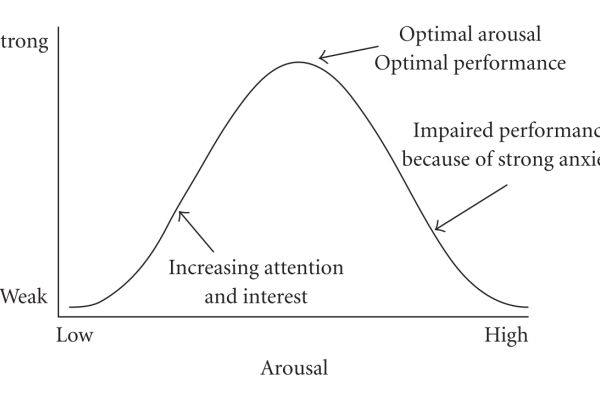
Mindfulness
Mindfulness is a state of active, open attention to the present. This state is described as observing one’s thoughts and feelings without judging them as good or bad.

To live mindfully is to live in the moment and reawaken oneself to the present, rather than dwelling on the past or anticipating the future. To be mindful is to observe and label thoughts, feelings, sensations in the body in an objective manner. Mindfulness can therefore be a tool to avoid self-criticism and judgment while identifying and managing difficult emotions.
Mindfulness is rooted in Buddhist and Hindu teachings. Buddhism includes a journey toward enlightenment, and the concept of “sati,”—which encompasses attention, awareness, and being present—is considered the first step toward enlightenment. The term was roughly translated from the ancient language Pali into the term “mindfulness.”
The emergence of mindfulness in Western culture can be attributed to Jon Kabat-Zinn. Kabat-Zinn studied mindfulness under several Buddhist teachers, such as Philip Kapleau and Thich Nhat Hanh. As a professor at the University of Massachusetts medical school in the late 1970s, Kabat-Zinn developed a program called Mindfulness-Based Stress Reduction (MBSR) to treat chronic pain. He discovered that patients would often try to avoid pain—but that that avoidance would lead to deeper distress. Practicing mindfulness was a more successful approach.
As mindfulness shifted into mainstream science and medicine, it became a pivotal therapeutic technique; it was integrated into Mindfulness-Based Cognitive Therapy, Dialectical Behavior Therapy, and Acceptance and Commitment Therapy, among others.
Mindfulness encompasses two key ingredients: awareness and acceptance. Awareness is the knowledge and ability to focus attention on one’s inner processes and experiences, such as the experience of the present moment. Acceptance is the ability to observe and accept—rather than judge or avoid—those streams of thought.
The goal of mindfulness is to cultivate perspective on one’s consciousness and identity that can bring greater peace mentally and relationally. Mindfulness may also be used in mindfulness-based therapies, to address stress, anxiety, or pain, and simply to become more relaxed.
Mindfulness has its origins in Buddhist and Hindu teachings, from which the concept “sati” was roughly translated to “mindfulness.” The practice was popularized in the West through the work of Jon-Kabat Zinn. Zinn created Mindfulness-Based Stress Reduction to treat pain, anxiety, and stress, and he ultimately brought mindfulness into mainstream clinical practice.
Flow is a state in which one is completely absorbed in an activity and loses self-awareness. Flow and mindfulness both involve deep concentration—but only flow involves goal-directed behavior. While mindfulness channels concentration entirely toward the present moment, flow channels concentration toward skills and goal achievement, which might include thoughts of the past and future and judgment of those thoughts.
Mindfulness is one form of meditation. Meditation utilizes various practices to quiet the mind or achieve a higher level of consciousness, one of which is mindfulness. Mindfulness can be cultivated within or outside of formal meditation and woven into any activity, such as taking a walk or being engaged in conversation.

A person’s experience of time tends to be subjective and heavily influenced by their emotional state. Fears and insecurities about the past and the future can make it difficult to fully appreciate the present. The key is learning how to pay attention.
Mindfulness can take place through meditation sessions or smaller moments throughout the day. To cultivate a state of mindfulness, you can begin by sitting down and taking deep breaths. Focus on each breath and the sensations of the moment, such as sounds, scents, the temperature, and the feeling of air passing in and out of the body.
Shift your attention, then, to the thoughts and emotions that you’re experiencing. Allow each thought to exist without judging it or ascribing negativity to it. Sit with those thoughts. The experience may evoke a strong emotional reaction. Exploring that response can be an opportunity to address or resolve underlying challenges.
To cultivate awareness, observe your thoughts and emotions and explore why those specific ideas might be surfacing. To cultivate acceptance, avoid judging or pushing away unpleasant thoughts. Emotions are natural and everyone has them—acknowledging them can help you understand yourself better and move forward.
Mindfulness can help bring you into the present moment throughout the day. As you wake up, you can focus on your breathing and the way your body gradually becomes more energized. You can incorporate a brief meditation into your work day, perhaps on your lunch break, and focus and appreciate the experience of eating during meals.
Mindfulness has been embraced by corporate leaders, sports teams, the military, and countless individuals around the world. The practice may owe its popularity to today’s fast-paced, technology-driven world, rife with financial and time pressures. Mindfulness may represent an unmet need for moments of quiet, contemplation, and calm.

Mindfulness is frequently used in meditation and certain kinds of therapy. Its benefits include lowering stress levels, reducing harmful ruminating, and protecting against depression and anxiety. Research even suggests that mindfulness can help people better cope with rejection and social isolation.
Review studies suggest that mindfulness-based interventions can help reduce anxiety, depression, and pain. To a lesser extent, they can alleviate stress and improve quality of life. However, inconsistencies in the way mindfulness is defined and measured make it difficult to determine whether mindfulness really provides other benefits.
Mindfulness encompasses awareness and acceptance, which can help people understand and cope with uncomfortable emotions, allowing them to gain control and relief. To cultivate these skills, concentrate on breathing to lengthen and deepen your breaths. Foster an awareness of the five senses. Notice your thoughts and feelings, and practice curiosity and self-compassion.
Mindfulness can play a role in helping people break habits such as smoking or overeating. When a habit has developed, the trigger (hunger) prompts a behavior (eating) that leads to a reward (satisfaction). Becoming aware of the behavior and what is derived from it can help alter the reward and replace it with a healthier behavior.
Higher levels of mindfulness predict happier and more satisfying relationships, research suggests. It’s difficult to disentangle whether mindfulness directly caused those improvements, but mindfulness does benefit key relationship skills, such as being present and attentive, regulating emotions, being self-aware, and cultivating empathy and compassion.














